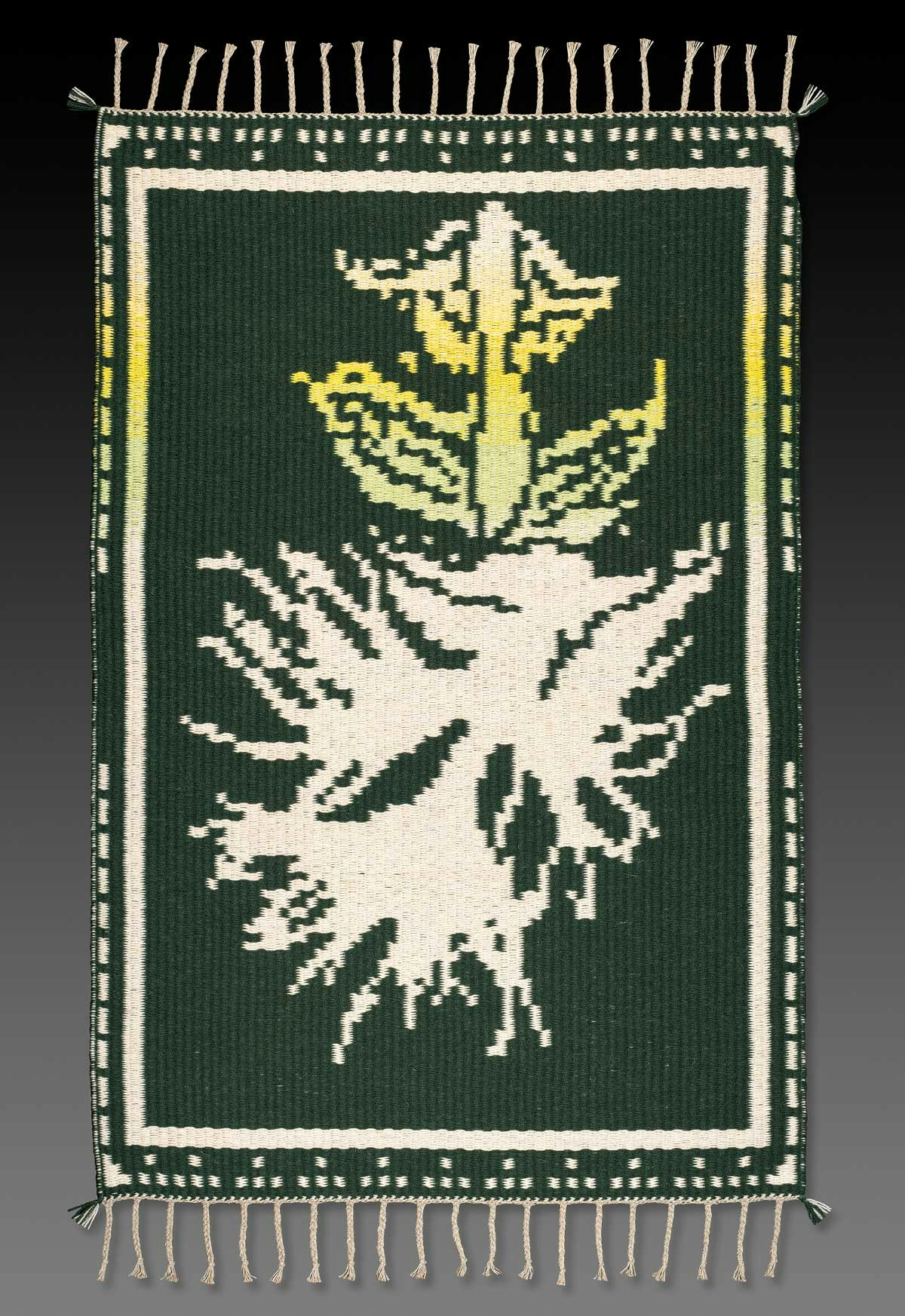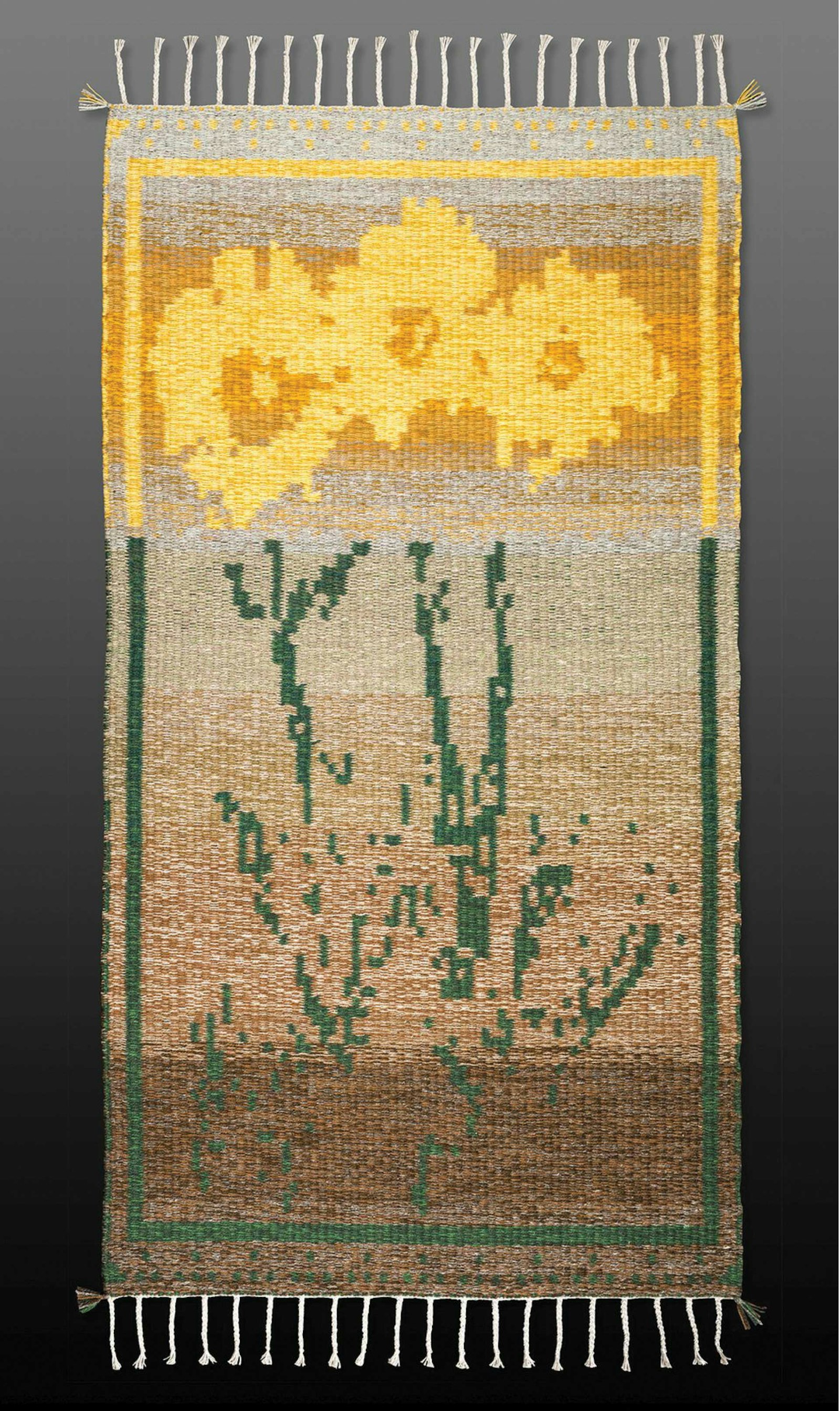Few things motivate weavers so well as a challenge, whether it’s from a study group, a guild, or a friend. A good challenge stimulates creativity, and the end results become a point of pride. While it’s always a delight to view the finished products of a challenge, it can take many steps to go from the point of challenge to the final project. In 2016, Pasqua Warstler, a good friend who was also the gallery director of the Bonifas Arts Center, proposed just such a challenge to me. She suggested I come up with a body of work that she could hang in the main gallery. As she usually filled her calendar two years out, she gave me a tentative date of early winter 2018. I was eager to get started, but I needed an idea for the focus of this yet-to-be-determined series.
At the time of this challenge, I had been a weaver for about 43 years. I had dabbled in many weaving techniques and attended a wide variety of workshops and seminars over the years. I received a scholarship in the mid-1990s to attend a Peter Collingwood workshop outside of Grand Rapids, Michigan. That’s where I learned about rug weaving and shaft switching, changing my views of rug weaving completely. Until that time, I had woven rugs employing techniques such as block weave, rep weave, rag weaving, and weft-faced weaving, but shaft switching was a game changer for me. A few years later, I purchased the Harrisville Rug Loom and the Collingwood Shaft-Switching Device.

Moonwort.
By the time I was faced with my new challenge, I had been weaving shaft-switched rugs and wall hangings for many years. This was the technique I preferred to use when expressing my visions. My means of design had also changed and developed over the years, starting first with graph paper, then moving to Excel spreadsheets, and eventually to a software product called Stitch Painter produced by Cochenille Design Studio.
As I explored ideas for the theme of my series, I decided to use my knowledge of botany. Although I had never used my botany degree professionally, I have always had an interest in botanical and natural sciences. I learned about the Michigan Nature Association, an organization that was doing research on Michigan’s endangered wildflowers. I was interested and began to do my own research about the wildflowers and the causes of their imperilment as I studied maps, made drawings, and took photos.
I began to formulate an idea for the scope of this series and who might benefit from viewing it when complete. One by one, I began my research and design process for each wildflower that would be in the series. Using tools such as Stitch Painter, a light box, and graph paper, I designed and completed 12 panels for the exhibit.
I used a framework within the panels to unify them and pull them together into a cohesive group. When using the shaft-switching technique, I weave with two shuttles at all times. Each shuttle carries three strands of rug wool, usually slightly different shades of the same color. This technique allows me to enhance specific areas, and it also has the advantage of enabling me to gradate my colors by dropping one strand and adding a new one as the weaving progresses. All of the panels were finished with two rows of Damascus knots, and the warp threads were braided using techniques gleaned from Peter Collingwood’s Techniques of Rug Weaving.
To complete the series, I created four notebook journals to accompany the exhibit. Each tab within the journals gives the reader information about the threatened or endangered wildflower, the common and scientific names, maps of where it can be found, photos, my cartoons or printouts used while weaving, and samples of the yarns I used. I also included my artist statement for the series along with suggestions to minimize threatened species and loss of habitat.

Prairie Fringed Orchid.
I titled my series A Weaver’s Journal of Endangered Wildflowers, and I’m happy to say the panels were completed on time and successfully shown at the Bonifas Arts Center. The series has also been shown at the Birmingham Bloomfield Arts Center, ArtPrize, Central Michigan University Baber Room, the Ridges Wildlife Sanctuary, the Fine Line Creative Arts Center, and most recently it was on display at the DeVos Art Museum at Northern Michigan University. I also showed the series at the 2019 conference for the Wildflower Association of Michigan. I am partnering with this nonprofit organization and donating 5 percent of sales from the series to further the Wildflower Association’s cause and mission. What started as a seemingly simple challenge from a friend turned into so much more than I could have ever imagined back in 2016.
Resources
- Collingwood, Peter. Rug Weaving Techniques: Beyond the Basics. Loveland, Colorado: Interweave, 1990.
- ———. The Techniques of Rug Weaving. New York: Watson-Guptill, 1969.

